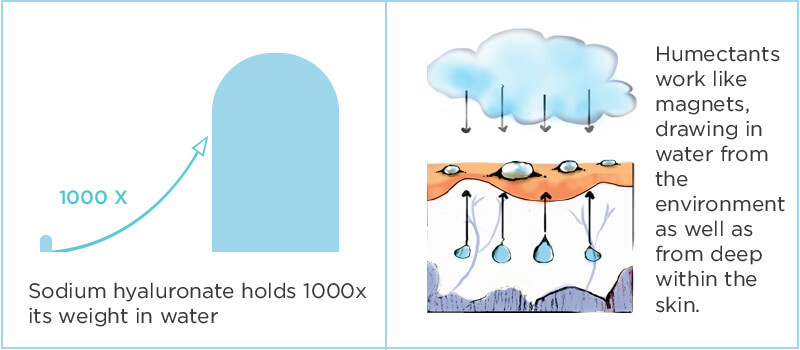Hyaluronic Acid( Sodium hyaluronate): A Silver Bullet in the Field
Hyaluronic acid (HA) which is also known as the hyaluronan, is practically a non sulfated, glycosaminoglycan anionic molecule which is widely distributed throughout the connective, Epithelial as well as nueral tisusues. It is called to be very much unique among the glycosaminoglycans which are non sulfated forms in the plasma membrane instead of the Golgi apparatus, which can result out to be very large, with its molecular weight which often reaches to the millions. One of the main components of the extracellular matrix, is known as the the hyaluronan. It practically contributes significantly to the cell proliferation and migration, and thus may also be involved in the progression of some malignant tumors.
The Uses of Hyaluronic Acid: -
• Cancer
Hyaluronic acid synthesis has a huge role in particularly all stages of cancer metastasis. It produces an anti-adhesive HA, HAS. This element has the power to allow the tumor cells to release particularly from the initial and the primary tumor mass. On the other hand if HA as the capability to associate with the receptors like the CD44, the main and the primary activation of Rho GT Passes can definitely has the ability to promote epithelial-mesenchymal transition (EMT) of the cancer cells. It is mainly during the process of intravasation or extravasation that the interaction between the HAS which has produced HA along with the receptors like the CD44 or RHAMM promotes the cell changes which practically is allowed for the cancer cells which is required to infiltrate the vascular or lymphatic systems. During this journey in the system, the HA produced by HAS protects the cancer cell from physical damage.
• Wound repair
Skin practically initiates and provides a mechanical barrier to the external environment thereby acting to prevent the ingress of all the different infectious agents. If it is injured once, then the tissues beneath are fully exposed to and is vulnerable to infection. Thus a rapid and effective healing process holds a very much crucial significance in order to reconstruct the barrier function. The healing process of the Skin wound is mainly a very complex process, which mainly includes many interacting processes which are initiated by haemostasis and then followed by the release of platelet-derived factors. The following stages namely are inflammation, granulation tissue formation, re-epithelization and lastly followed by remodeling. HA is very likely to play a multifaceted role mainly in the mediation of these cellular and matrix events. The proposed roles of HA in this process of skin wound healing events and period are given below.
Hyaluronic acid has also been known to be used in all kinds of synthesis of biological scaffolds especially for wound-healing applications. These scaffolds mainly possess proteins such as fibronectin. This is mainly attached to the hyaluronan which mainly functions to initiate and facilitate the cell migration into the wound. This is particularly very much important for all the individuals with suffering from diabetes or any kind of chronic wounds.
• Medical Uses
The Hyaluronic acid is said have been applied in the treatment of osteoarthritis of the knee. This process is done by injecting the said acid into the joints. Nut on the other hand it has actually not been proven, but however it does not have much significant benefit and on the other hand can also possess some adverse eg\ffects as well.
The dry scalp is primarily caused by atopic dermatitis. This may be primarily treated with the help of skin lotion which mainly contains sodium hyaluronate which acts as its active ingredient.
The Hyaluronic acid is actually i\used for various ways in the formulation to create the artificial tears which is used to treat the dry eye.
• Cosmetic Uses
The Hyaluronic Acid is one of the most common ingredients used in the skin care products. It is also used as dermal filler especially in cosmetic surgery. This element is mainly injected thereby using either of a classic and sharp hypodermic needle or even known as the Cannula. It may also include some of the complications like severing of nerves and vessels, leading to bruising and pain as well. There are many cases in which Hyaluronic acid fillers come as a result of granulomatous foreign body reaction.



 Healthier Future
Healthier Future